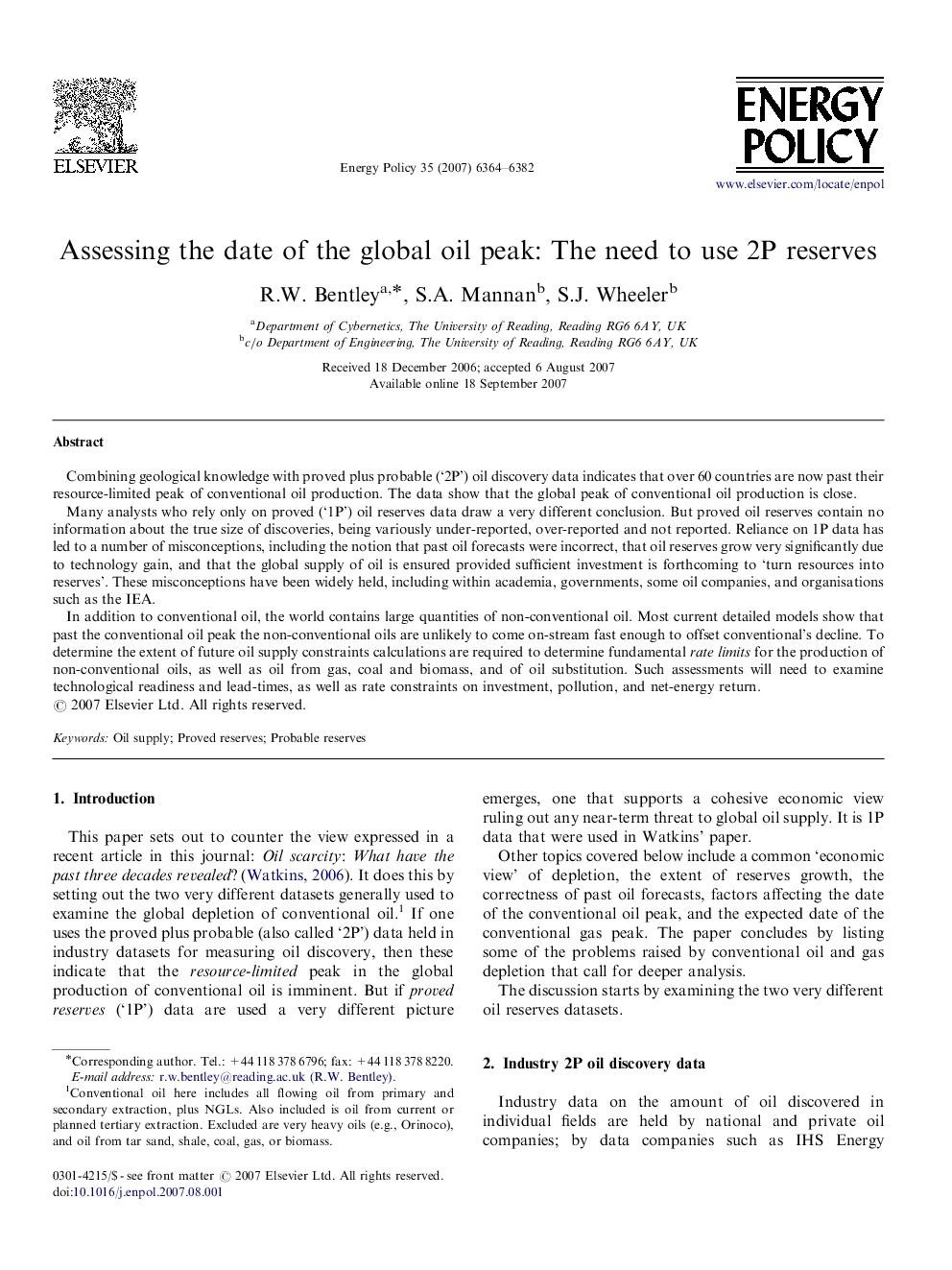| کد مقاله | کد نشریه | سال انتشار | مقاله انگلیسی | نسخه تمام متن |
|---|---|---|---|---|
| 995345 | 936183 | 2007 | 19 صفحه PDF | دانلود رایگان |

Combining geological knowledge with proved plus probable (‘2P’) oil discovery data indicates that over 60 countries are now past their resource-limited peak of conventional oil production. The data show that the global peak of conventional oil production is close.Many analysts who rely only on proved (‘1P’) oil reserves data draw a very different conclusion. But proved oil reserves contain no information about the true size of discoveries, being variously under-reported, over-reported and not reported. Reliance on 1P data has led to a number of misconceptions, including the notion that past oil forecasts were incorrect, that oil reserves grow very significantly due to technology gain, and that the global supply of oil is ensured provided sufficient investment is forthcoming to ‘turn resources into reserves’. These misconceptions have been widely held, including within academia, governments, some oil companies, and organisations such as the IEA.In addition to conventional oil, the world contains large quantities of non-conventional oil. Most current detailed models show that past the conventional oil peak the non-conventional oils are unlikely to come on-stream fast enough to offset conventional's decline. To determine the extent of future oil supply constraints calculations are required to determine fundamental rate limits for the production of non-conventional oils, as well as oil from gas, coal and biomass, and of oil substitution. Such assessments will need to examine technological readiness and lead-times, as well as rate constraints on investment, pollution, and net-energy return.
Journal: Energy Policy - Volume 35, Issue 12, December 2007, Pages 6364–6382